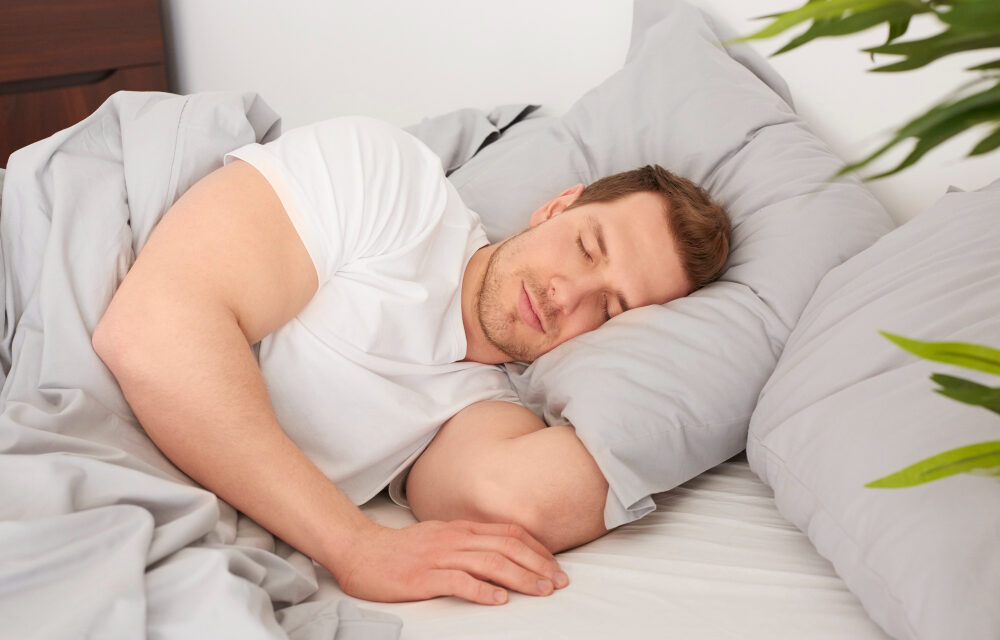Sleep is essential for our health as it restores our energy, making us feel rested and rejuvenated. Fewer hours of sleep can also lead to increased fatigue and daytime drowsiness. This can be dangerous if you engage in activities that require alertness.
Sleep apnea is alarming since severe cases are linked to higher mortality rates. If you are experiencing this condition, knowing the best sleep position for sleep apnea is important because this may be the right treatment for you. Explore the natural sleeping positions recommended by sleep apnea dentists for individuals with sleep apnea and how they can help improve your condition.
What is Sleep Apnea?
Sleep apnea is a health condition wherein patients stop breathing for brief moments hundreds of times per night. As a result, their bodies don’t receive enough oxygen, which causes poor quality of sleep and daytime fatigue.
The most common sleep apnea symptom is loud snoring. Some sleep apnea patients may not snore but may wake up gasping for air or experiencing a choking sensation. Sleep apnea can also cause morning headaches, jaw pain, and stiff necks.
Polysomnography, a home sleep test, can be used to identify sleep apnea. This test examines sleep-related brain waves, heart rate and blood pressure, eye movement, and muscle activity during sleep.
Impact of Sleep Position on Sleep Apnea
The position of the body during sleep can play a huge role in sleep apnea. Patients with mild sleep apnea may find relief from certain sleeping positions. On the other hand, those experiencing moderate or severe obstructive sleep apnea events may need to use more intense treatment options such as CPAP Machines.
Best Sleep Positions for Sleep Apnea
The ideal sleeping position for people with sleep apnea allows free airflow throughout the night. Here are the recommended sleep positions for individuals with sleep apnea:
Left-Side Sleeping
One of the best positions for sleep apnea is side-sleeping, particularly the left-sided sleeping position. This helps keep the airways open, allowing for unimpeded breathing throughout the night of sleep. To make this nightly sleeping position even better, you can place a pillow between your knees and a thicker pillow or body pillow behind your back to provide extra support and reduce pressure.
Elevated Sleeping Positions:
Another effective sleep position for sleep apnea involves elevating the upper body. By using a wedge-shaped pillow or propping yourself up with additional pillows, you can help prevent the relaxation of throat muscles and reduce breathing difficulties during sleep. This position helps promote better airflow and can significantly improve sleep quality.
Sleeping with your head elevated can also benefit individuals with other respiratory conditions, such as acid reflux or congestive heart failure. However, it is important to ensure that the angle of elevation is comfortable and does not strain your neck or back.
Avoiding Supine Position
Sleeping on your back (supine position) can worsen the condition of most sleep apnea patients, as it increases the likelihood of the tongue and soft tissues collapsing backward and the chances of airway obstructions. If you notice the symptoms of sleep apnea, try to avoid sleeping on your back as much as possible.
Avoid Sleeping on Your Stomach:
Sleeping on your stomach is generally the worst sleeping position for sleep apnea patients. There are complaint among stomach sleepers that they experience strain in their neck, resulting in awakenings during sleep. Additionally, it may cause the lower back to arch and put additional pressure on the airway.
Additional Tips for Better Sleep with Sleep Apnea
In addition to avoiding back and stomach sleeping, here are a few more tips to enhance your sleep with sleep apnea:
- Sleep on your side to reduce airway obstructions.
- Use a special pillow or cushion to support your back and encourage side sleeping.
- Avoid smoking, as it irritates the airways and worsens symptoms of sleep apnea.
- Have a consistent sleep routine to help set and reset your internal clock.
- Get a good mattress pillow to make sure you get a good night’s rest.
- Practice relaxation techniques before bedtime to reduce stress and promote better sleep.
- Keep your bedroom free from allergens and ensure good air quality.
- Reduce your fluid consumption before bed to avoid getting up in the middle of the night to use the restroom.
- Try nasal strips or nasal dilators to improve nasal breathing and reduce snoring.
- Elevate the head of your bed by a few inches using bed risers or blocks.
- Keep pets out of the bedroom if their presence disrupts your sleep.
- Use a humidifier in your bedroom to prevent dry air, which can irritate the airways.
- Address any nasal congestion or allergies that may contribute to breathing difficulties during sleep.
- To maintain a consistent sleep schedule, avoid napping during the day, especially close to bedtime.
- Use an adjustable bed frame to find the most comfortable sleeping position.
- Try throat exercises or additional therapy exercises designed to strengthen the upper airway muscles.
- Consider using a specialized sleep apnea pillow designed to improve breathing during sleep.
- Practice good sleep hygiene, including keeping your bedroom for sleep and intimacy.
- Make sure the nasal mask for your CPAP machine fits well and is comfortable if you use one.
Experience the Power of Positional Therapy at Garza DDS
For patients experiencing severe sleep apnea episodes, it’s essential to consider that your favorite sleeping position could potentially be harmful to your condition. Dr. Garza, a sleep apnea dentist in Gilbert, Arizona, specializes in sleep dentistry and other orthodontic treatments. If you’re facing nighttime sleep disruptions, Garza DDS can provide the suitable sleep apnea treatment you need to improve your sleep quality. For more inquiries, contact our office at 480-674-4966 to set your appointment.


